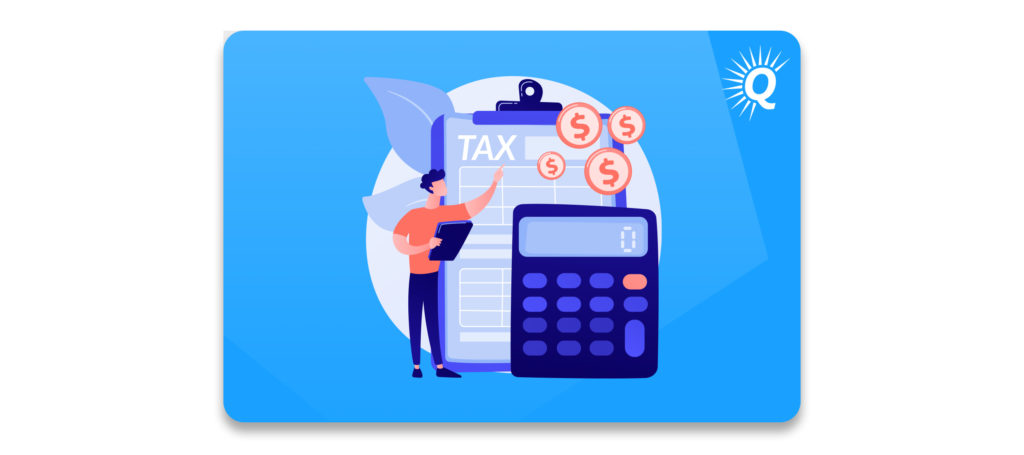Topics:
Never Miss a Beat - Get Updates Direct to Your Inbox
FILTER:


How To Maximize the Value of Your Content Website or Blog
By Quiet Light
Every business owner should have an exit strategy in place before approaching the selling process. To create an effective roadmap, the first step is gaining a full understanding of how to value and sell your content website for top dollar.
Not only does knowledge allow you to maximize your business’s value, but it also helps you run your site more efficiently while you’re still the owner.


In this article, we will discuss how content websites are valued, as well as how to increase the value of your content site prior to selling. Additionally, we’ll share actional steps to help you sell your content website for top dollar, should you decide to move forward with selling.
How to Value Your Content Website
Regardless of whether you are ready to sell your website, knowing how to properly value a site is critical. Understanding what factors influence value is the first step in increasing its value.
There are numerous qualitative and quantitative variables that play a significant role in the valuation process. First, we’ll discuss the most widely used valuation formula. Then, we’ll dive into the core aspects that influence a business’s value.
Valuation Formula
The most widely used valuation formula for content websites (and indeed, many businesses in general) is the Earnings Multiplier Valuation Method. The formula is as follows:
Seller’s Discretionary Earnings x Multiple = Content Site Value
While the Seller’s Discretionary Earnings, or SDE, is sometimes simply referred to as income, there are some very important distinctions between the two. To state it more concisely, SDE is the income that your business generates plus expenses that would be considered discretionary.


The reason for this is that the new owner would not necessarily need to incur these discretionary expenses, and thus could add them back to the income. We call these “add-backs.”
Common discretionary expenses include:
- Charitable contributions
- Individual owner’s salary
- Expenses that benefit the owner
- Amortization
- Interest
- Federal and state taxes
This is not an exhaustive list. However, when calculating value it is extremely important to make sure that you get your add-backs correct. If you fail to take some add-backs into account you will devalue your business and leave money on the table.
Thinking of Selling Your Business?
Get a free, individually-tailored valuation and business-readiness assessment. Sell when you're ready. Not a minute before.
Done correctly, however, the SDE of your business can be calculated accurately. Calculating the multiple can get a little more complex.
Breaking Down The Multiple
At first glance, the valuation formula may feel too simple to truly encapsulate all of the valuable aspects that your content site may have, including your:
- Traffic
- Domain name
- Website rankings
- The relationships that you have built within your industry
However, many tangible metrics, as well as qualitative aspects, are captured within the multiple.
Calculating a multiple can be a complex project. However, in its most basic sense, the multiple is a measure of the purchaser’s expected return on investment (ROI).
While there are numerous aspects that affect the multiple, and thus overall business value, they can often be broken down into four main categories:
- Growth
- Risk
- Transferability
- Documentation
Taken together, these four factors are often known as the Four Pillars of Value. Let’s take a closer look at each.
Growth
Growth refers to the historic and current growth trends of your content website, as well as the potential future growth of your business. Strong past and current growth will increase the multiple of your business, while negative growth will hurt your overall value.


Since almost all individuals purchasing a website seek to realize a return on their investment, they ideally want to see clear-cut ways to easily create future growth.
For example, if your website has strong traffic but the traffic is under-monetized, that could represent an area of easy revenue growth by a new owner. If you are only using Google AdSense in your monetization strategy, they could potentially add in affiliate marketing, physical or digital products, or other avenues of monetizing the traffic.
It is prudent to sell your business during a period of growth rather than a period of decline. In fact, the direction and strength with which your business is trending can often be one of the biggest influences on the overall multiple that you receive.
In addition, there is more to think about than just the performance of your business. You must also consider the marketplace or niche conditions that the business operates in. Logically, a growing market for your niche will positively impact your business valuation, while a declining market will hurt your business valuation.
Marketplace dynamics can have a significant impact on the overall multiple that your business fetches. In the exciting times of the early 2000s, online businesses were being sold for 10x multiples and above. Just a little over half a decade later in the financial crash of 2007-2009, online businesses and content sites were only realizing multiples in the 2.6x-2.7x range.
Risk
Simply put, the more risky your content website is, the smaller your multiple will be. In turn, the less risky it is, the higher your multiple will be. Investors love to see a strong expected ROI. They also love to see a small risk profile.
There are many factors that influence the risk of your website. For example, if your website relies too heavily on only one source of traffic, such as organic traffic, that would be considered a risk. If that source of traffic dries up unexpectedly due to an algorithm change, the performance of your site will suffer drastically. On the flip side, having varied sources of traffic will help to reduce risk.


In addition, the age of your business will influence the perceived risk of your business. All else being equal, websites in the 1-3 year-old-range will see lower multiples than older websites. Websites that have been operating for 14 or more years will often fetch higher multiples. This is due to the fact that the longer a business is around the more stable and secure it is perceived to be.
Transferability
The more transferable your website or business model is, the more valuable it will be, and vice versa.
For example, let’s say that the value proposition of the website is based on you and your personality. In this situation, a potential buyer will be much less likely to purchase your business since it will likely perform less well in their hands.
There are many more aspects that can influence the ease with which a website can be successfully transferred. If you are just starting your own content website, this is an important factor to consider when choosing how to structure and position your business.
Documentation
When you sell your website, potential buyers want to be able to accurately verify that the information you present to them is accurate and factually true. They also want to be able to closely examine the current and historic performance of your business, the relationships that you have with partners or suppliers, your content strategy, and, most importantly, your accounting methods.
For this purpose, having clear and consistent documentation and bookkeeping procedures is crucial as a website owner. If you fail to do this, your multiple will be negatively impacted. Having clear documentation processes will help you run your business more efficiently and effectively while it is under your ownership. In addition, it will increase your website value and make it easier to sell when you do decide that it is time to sell.
Time Cost
Now that we have a basic understanding of the Four Pillars of Value, let’s take a closer look at another factor that could influence the overall value of your business: The time cost.
Thinking of Selling Your Business?
Get a free, individually-tailored valuation and business-readiness assessment. Sell when you're ready. Not a minute before.
Most entrepreneurial individuals are not looking to purchase a job, so to speak. They would like to purchase a business that allows them to gain a large amount of value for a small amount of time input. For this reason, the amount of time that running your website requires will have an impact on its overall value.
Naturally, the less time required, the more upward pressure it will exert on your multiple, and vice versa.


Remember, there are many factors that influence the overall value of your business. Some are more concrete, some are more qualitative. As a business owner, gaining a valuation can give you a pretty good idea of what you could expect to receive for your content website. At the end of the day, however, your business is worth what someone is willing to pay for it.
How to Increase The Value of Your Content Website
If you are going to sell your content website, it makes sense to sell it for as much as possible. Now that we have reviewed some of the basics of website valuation, let’s take a look at the steps that an individual can take to increase the value of their website.
It is advised that you take a systematic approach. Below, we have outlined our proven, step-by-step approach for increasing the value of your website. The steps include:
- Identify Potential Issues
- List potential Optimizations
- Prioritize
- Implement
Let’s take a closer look at each of these steps.
Step 1: Identify Potential Issues
In order to identify potential issues that could drive down the value of your website, we’ll return to the Four Pillars of Value: Risk, Growth, Transferability, and Documentation.
By looking at each pillar in turn and identifying potential weaknesses within your business, you can start to develop a list of areas for improvement. As you do so, keep an eye out for any deal breakers, or aspects that would fully prevent your website from selling.
Below, we’ll briefly discuss common issues that can be found in each pillar of value.
Risk
Any aspect of your business that is built on one single point of potential failure incurs more risk. Relying on one main source of website traffic, from google ads, for example, or only having one source of revenue both fall into this category.
In the extreme, risky attributes can serve to be deal-breakers for the potential sale of your website. Some of these might include:
- Legislation that will have a large impact on your industry
- Your business is in an illegal industry
- A key vendor will stop providing you with your product
Go through your business operations and list all areas where your business faces risk. Additionally, make a list of the dealbreaker attributes that your business may have, if any. Keep this list for later.
Growth
Growth plays a critical role in the valuation process. A few key questions to consider include:
- What is your SDE growth trend?
- How long has your business been growing for?
- What do your revenue trends look like?
- Are there easy prospects for future growth for a potential new owner?
- Is your industry as a whole in growth mode, stable, or in decline?


Take stock of the past and current growth trends for your business, as well as future growth opportunities. While a business in decline will not necessarily be a deal-breaker, it will be valued a lot less than a company that is experiencing healthy growth.
Transferability
Take note of how easy it would be for a new owner to successfully run your business. Are there any issues that you can identify within your business that would make it harder for someone other than yourself to run your business? Is your personality attached to the business, or does your business require a specific license or certification to run? Do you own a very niche website with a narrow target audience that requires a specific knowledge base?
As mentioned previously, the best time to address issues of transferability are when you are just starting your website. By selecting an industry and business plan that is easily transferable, you will set yourself up for a successful transfer down the road.
Documentation
A new owner will want to see that you have clear accounting and recordkeeping practices in place. Go through your operations and note whether your recordkeeping is up to par. If a potential buyer cannot verify your revenue, traffic, and sales figures then they will likely have significant reservations about purchasing your website. Oftentimes, poor bookkeeping can be a quick dealbreaker.
Step 2: Create Optimizations
Once you have identified your website’s areas of weakness, create specific actionable steps that you can take to address these issues. Below are some examples for how to improve in regard to each Pillar of Value.
Risk
Depending on the issues that increase your business risk, you could:
- Diversify traffic sources
- Diversify revenue sources
- Develop an email list
- Implement protections against competition, if possible
- Diversify client base


The appropriate steps for you to take will depend on which risks your business is exposed to. Make a list of the steps that you can take to mitigate risk for your own website.
Growth
When it comes to growth, you can:
- Sell during a growth period
- Implement upsells
- Sell an online course or other digital product
- Add an online store to your site
- Add an affiliate link (or links) to your site
- Expand into other niches
- Expand your marketing channels
For example, let’s say your main source of traffic comes from Facebook advertising. In this case, advertising on another social media platform such as YouTube could offer new avenues of growth.


To increase revenues, you could consider adding an eCommerce store to your site. In addition to creating passive income, selling products is a great way to diversify your income streams from your content marketing efforts. It will also drive growth, even if you didn’t originally set out to start an eCommerce website.
Again, take note of the specific actions you can take in order to create or maintain favorable growth for your website.
Transferability
If you have built your business on a model that is hard to transfer, it can be difficult to address these issues once it is already built. However, do your best to address any issues that your business may have with transferability.
- Remove your personality from the business
- Remove the need for a license to be required for your business
- Create standardized operating procedures
The steps you take will depend on your own business. Again, the best time to ensure the transferability of your business is when you are starting it.
Documentation
If you haven’t already, be sure to:
- Clean up your books
- Document your business operations
- Separate your personal and business accounts
- Separate business operations if you own more than one business


When it comes to documentation, one of the most important things that you can do is to maintain clear and concise financial accounting practices. In addition to making it easier to verify the performance of your business, it will instill confidence that you are running a professional and well-organized operation.
Step 3: Prioritize
Once you have identified issues within your business and created specific action steps that you can take to address these issues, it’s time to analyze and prioritize the steps. You can do this by listing three characteristics for each optimization item that you have created. These characteristics are:
- Time to implement and prove
- Ease and cost of implementation
- Expected impact on website value
Take some time to do this. Once you have created this list, it is time to prioritize which actions to implement first.
Step 4: Implement
When it comes time to implement, choose the tasks that are the easiest to undertake that will deliver moderate to significant increases in the value of your business. Optimizing your business can be an endless process, one that offers decreasing returns to effort. Starting with the actions that offer the most bang for your buck makes sense.
Thinking of Selling Your Business?
Get a free, individually-tailored valuation and business-readiness assessment. Sell when you're ready. Not a minute before.
In addition, identify actions that will take a long time to implement but offer strong returns in value. Since gains are realized over a long time frame, you’ll want to get started on them promptly.
Lastly, be sure to take actions that address each of the Four Pillars of Value. Don’t just focus on one or two pillars and neglect the rest.
How to Sell Your Content Website
If this is your first time selling a website, it is good to familiarize yourself with the process that you will go through as you sell your business. For many, selling a business can be a daunting task. As such, working with a qualified business advisor will help to streamline and optimize the process.


In addition, the process becomes easier to digest when it is broken down into standardized steps. Commonly, these steps include:
- Prepare Information
- Discovery
- Letter of Intent
- Due Diligence
- Transition Planning
- Closing the Sale
- Post Sale Training
Let’s take a closer look at each of these steps.
Step 1: Prepare Information
This is often considered the most important step in selling your business. By diligently preparing your website’s relevant information you will make it easier for prospective buyers to make an educated and informed buying decision. In addition, it will help to create a smooth sales process.
This step usually includes:
- Prepare due diligence materials
- Gather financial records
- Gather traffic and conversion information
- Identify Key Performance Indicators (KPIs)
- Explain your website operations
Your efforts to complete this step in a thorough manner will pay dividends throughout the sales process.
Step 2: Discovery
Discovery is a period of time where a prospective buyer will have a chance to learn about the details of your website. It is an opportunity for the buyer to verify that your information is accurate and correct, and help them make an informed decision on whether the business represents a wise purchase decision for them.
During discovery, the prospective buyer will be able to examine your website’s:
- Financial records
- Traffic statistics
- Customer retention records
- Vendor relationships
- Relevant industry data


During this time, you and your business advisor will likely have conference calls with potential buyers. Be friendly, upfront, and transparent throughout this process.
Step 3: Letter of Intent
Once an individual has determined that they would like to purchase your website, a letter of intent is signed between both parties. At this time, a sales price is often settled upon. While the letter of intent does not finalize the sale, it is a significant step in that direction.
Once the letter of intent has been signed, you and the buyer enter an exclusive due diligence period.
Step 4: Due Diligence
Due diligence is a period of time, often a matter of weeks, where the buyer and their associates will thoroughly vet your business one last time. This allows them to ensure that all information presented is in fact accurate. They will comb through your documentation and records, and ask any clarifying questions as necessary.
Buy a Profitable Online Business
Outsmart the startup game and check out our listings. You can request a summary on any business without any further obligation.
As you can imagine, maintaining clear and accurate documentation throughout the life of your business will help to make this process easier for both of you. Regardless, due diligence can be a stressful time for both parties. Creating a trusting and healthy working relationship with the potential buyer will help to ensure a smooth due diligence process.
Step 5: Transition Planning
Once a buyer has been satisfied during due diligence, you enter a period of transition planning. During this period, you and the buyer:
- Negotiate an Asset Purchase Agreement
- Negotiate any other agreements as necessary
- Set up merchant accounts
- Set up bank accounts


Transferring a business is not completed with just the click of a button. This period allows both parties to have ample time to plan for a successful transfer.
Step 6: Closing the Sale
During the closing process, funds are transferred (often through an escrow account), assets are transferred, and the agreement is executed. This step is the culmination of years of hard work building your content website and months spent preparing and negotiating the sale.
Step 7: Post Sale Training
Many sales agreements include a period of post-sale training. During this time, you will provide the buyer with an agreed-upon level of instruction on how to run your business. This may include phone calls between you and the seller, email exchanges, or in-person training.
Conclusion
Valuing, optimizing, and selling a website can be an exciting period in an entrepreneur’s life. Often, much of the financial value that a website generates is realized when it is sold. However, this period can also bring uncertainty, challenge, and a lot of hard work.


Knowing how to value a website and how to increase its value will help prepare you for a successful exit. In addition, knowing the steps involved in selling will allow you to effectively prepare beforehand, as well as help guide you through the process when it comes time to sell. With the right approach, you can manage a successful and profitable exit from your content website business.





